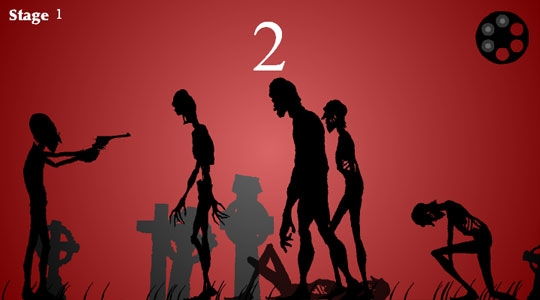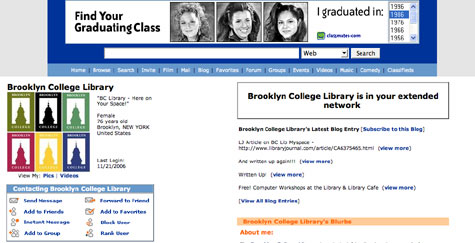Luke Waltzer, of cac.ophony fame, has done a nice job blogging some of the highlights from the CUNY IT conference on December 1st. One post in particular about the CUNY Online Baccalaureate Program has led to a very interesting conversation that examines the assumptions surrounding fully-asynchronous vs. face-to-face classes (I hate the terms fully-asynchronous and face-to-face, but I will remain with them for lack of an alternative -at least for the moment!). I think the respondents do a wonderful job (if at times anecdotal) of framing, analyzing, and challenging many of the assumptions that are all too often grafted upon the fully-asynchronous course. One of my specific interests has been to consider how universities approach the task of designing a virtual learning space that affords the same possibilities for serendipitous discoveries and the cross-pollination of ideas that physical spaces within a traditional campus offer. In fact, these spaces are by no means limited to a classroom -often times they represent the more informal spaces of conversation, discussion and sharing that happen within a social nexus outside of the classroom, whether in cafes, dorms, the laundry room, the great lawn, and/or (god forbid!) the party.
Many of the CUNY Baccalaureate Program’s online offerings, given what I saw at the presentation a week and a half ago, modeled their virtual learning spaces on Web 2.0 technologies like blogs, wikis, and podcasts, all technologies that are central to re-imagining how we aggregate digital content and (re)present it within a classroom setting. One problem with this solution is that these tools for sharing are all “protected” behind a firewall called BlackBoard (the Web 2.0 modules are from Learning Objects Inc. a Bb company) that makes the free flow and re-purposing of discussions, ideas, and resources between classes and students extremely difficult, if not impossible at times. How do faculty and students get their conversations out from behind the BlackBoard wall when they have completed the class? How can students take it with them when they move on from the university? How do issues of intellectual access of information become an issue in quite different terms than those of a student’s work schedule, age, or infirmity, as Phil Pecorino suggests in a comment within the original conversation I am referring to.
One of the questions I walked away with after seeing the fascinating projects various professors from around CUNY were working on was how can both the professors and the students represent this content in ways that cultivate teaching, learning and collaboration within a larger framework that represents the university community. I think this is an element of the experience of attending a university (whether physically or virtually) that an isolated course, as a measurable unit, cannot adequately account for. Perhaps we have to re-calibrate the design of content, courses, and interaction virtually to allow for a community that is significantly larger than one isolated course (or a semester filled with isolated courses) that allows professors, students and staff to interact in a space online that both incorporates the content of a class but also moves beyond that.
As a university invests in an online learning environment, whether fully asynchronous or not, this investment requires that they also commit to explore the current landscape of teaching and learning technologies in an attempt to build innovation and experimentation into the fabric of this process. Redirecting resources for a real, honest examination of the state of teaching and learning technologies will quickly suggest that universities are not leading the charge for research and development in this field -corporations are! Universities have been locked behind proprietary systems that have taken them out of the equation for many of the most important developments over the past ten years or so -interestingly enough, just about the same amount of time BlackBoard become the gold standard in online learning (which may have had more to do with its integration with Banner than its inherently superior interface and functionality).
That fact is that colleges and universities have to invest as much in online teaching and learning innovation as they do in online administration. As of now, any course that is conducted within the physical space of the university does, indeed, have a pedagogical advantage over the online classroom. However, this has very little to do with the pedagogy and everything to do with the context within which this pedagogy exists. In BlackBoard there is no way to engage a community beyond that defined by the course unit. A different kind of social experience that necessarily flows out from the classrooms into the building halls, dorms, cafeterias, etc. has no real outlet in a BlackBoard environment. It is this space of collaboration, socialization, and interaction beyond the unit of the course that is not being translated adequately into these virtual learning spaces.
This collaborative space that moves beyond the course unit is essential in order to make the virtual and physical spaces comparable in their ability to share information and ideas more broadly, despite the radically different mediums through which each can accomplish these tasks. As of now, the physical buildings and classrooms have a far greater advantage than any online course that is presented within a course management system that populates silos at the course level. These physical spaces for learning will, in fact, continue to have the advantage up and until universities (professors, administration, staff and students alike) are willing and able to examine online alternatives to the cookie-cutter learning management systems that do more to foster administrative efficiency than innovative environments for teaching and learning.







